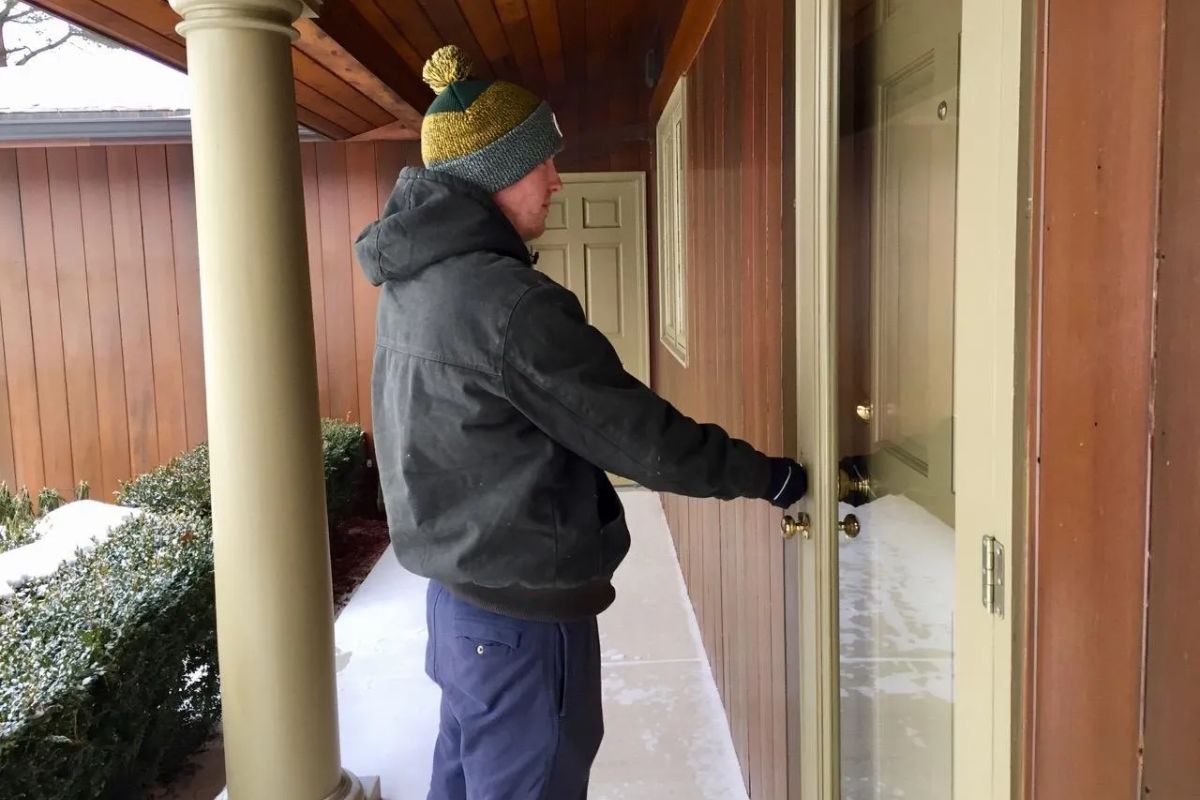Are you a landlord who suspects that your tenant is smoking in the apartment? This can be a concerning situation, as not only could it become an annoyance to other tenants, but burning substances inside a space also increases the risk of fire. Fortunately, there are tell-tale signs that you can look out for to prove whether or not your tenant is puffing away illegally indoors.
In this blog post we will provide some helpful tips on how to prove tenant is smoking in apartment and what measures you should take if confirmed.
How To Prove If Your Tenant Is Smoking Inside Your Unit?
As a property owner, it is your responsibility to oversee your property. Smoking can cause damage to your unit, which is why it's crucial for property owners or management companies to have solid evidence before accusing a tenant of smoking indoors. Keep an eye out for the following telltale signs to confirm whether a tenant is smoking or not.
The Smell
The scent of cigarette and marijuana smoke tends to linger for a significant amount of time, even if attempts are made to conceal it. Individuals may use methods such as lighting candles, burning incense, using diffusers, or opening windows in an effort to eliminate the odor. However, if these measures are overused, the scent of smoke or the aforementioned products may still be present, indicating that smoking has occurred.
Burning candles in a residence is not unusual, but if it is being done to cover up the smell of smoke, it may be noticeable. Unfortunately, the smell of smoke, whether from cigarettes or joints, can adhere to items such as clothing and furniture. If you can detect scents like curtains, carpets, sofas, or rugs, it is likely that smoking has occurred in that specific room.
Stains
Aside from the pungent odor, smoking cigarettes and marijuana can also leave a lasting and unsightly impact on the interior of a residence. Stains caused by the smoke can be found on various surfaces, including walls, counters, curtains, lamps, and light fixtures, creating an unsightly and unpleasant sight for any landlord or tenant.
These stains typically range in color from yellow to brown, depending on the duration and frequency of smoking. In some cases, the stains are small, while in others, they can cover an entire wall, creating an overwhelming visual distraction.
When it comes to smoke stains, they are particularly visible on wallpaper and paint, even after the walls have been freshly repainted. As a landlord, if you notice that your tenant has repainted the walls without your permission, it may be a sign that they are trying to hide the unsightly stains from cigarette or marijuana smoke.
Cigarette Butts And Marijuana Joints
Landlords may be surprised to discover an excessive amount of cigarette butts or marijuana joints in a particular area outside of the property. While some landlords allow smoking outdoors, some tenants will collect and throw the leftover butts and joints outside to create the impression that they were smoking outside.
During routine inspections, landlords can also be on the lookout for objects that are being used as ashtrays. Ideally, if tenants are smoking indoors, they will use an ashtray. However, ashtrays can take various forms, such as a mug, cup, bowl, or plate. Therefore, it's crucial to be vigilant for these items during inspection time.
Burns
Burn marks left by cigarettes or joints can be another issue that tenants may struggle to rectify. These marks can be left on carpets or furniture and can be nearly impossible to remove completely. While tenants may try to cover the burn with a rug or blanket, it can be costly for them to replace or repair the damaged spot. Unfortunately, the damage caused by a burn is often irreversible, and it can be a costly and time-consuming issue to deal with.
Stains and Residue from Smoking
Apart from the discoloration caused by smoke on the walls, landlords should also keep an eye out for yellow and brown dots around door frames as evidence of indoor smoking. These dots are a reliable indicator that a tenant has been smoking inside the property.
While tenants may try to ventilate the property by using a fan or smoking out of a window, condensation often leads to the formation of these dots on door frames, particularly around the kitchen and bathroom.
Residue
In addition to cigarette butts and burn marks, landlords should also be vigilant for any residue left behind by smoking. While tenants may try to conceal their smoking, a small amount of ash can easily be left behind on window sills, shelves, or electrical items. Ash is notoriously stubborn and can cling to multiple surfaces, making it easier for landlords to detect indoor smoking.
Can a Landlord Evict a Tenant for Smoking?
If a landlord has specified a no-smoking policy in a lease or rental agreement, they have the right to terminate the tenancy or evict a tenant who violates this policy by smoking.
Tips on How to Deal with Smoking Inside Your Unit

Using Signage to Address Smoking Inside Your Unit
You can consider posting signs at all entry points of your property to remind tenants that smoking is prohibited indoors and may only be allowed in specific designated areas outside the building. Placing signs near mailboxes and doors can be particularly effective in conveying this message.
Using Smoke Detectors to Detect Smoking Inside Your Unit
While many people believe that smoke detectors are only meant to detect fire, they can also be utilized to identify cigarette and marijuana smoke. As a preventative measure against smoking, it may be beneficial to install several smoke detectors throughout a unit. Not only does this serve as a safety precaution, but it also helps to deter tenants from smoking indoors. Although it may come at a cost, the benefits of having multiple smoke detectors outweigh the potential risks.
Fines
Consider implementing a fine system to discourage smoking indoors by letting tenants know that smoking is strictly prohibited and will result in a penalty. Most cities have designated smoking and non-smoking areas, and if a tenant is found smoking in a non-smoking zone, you, as the landlord, or law enforcement can issue a fine.
Building Inspection to Detect Smoking Violations
One way to catch tenants who smoke indoors is to conduct surprise building tours at random times, especially during the evening when many smokers tend to smoke indoors. To ensure effectiveness, it's important to vary the time of the tours to prevent tenants from anticipating them and altering their smoking behavior accordingly.
By catching smokers in the act, you can take appropriate action to enforce your no-smoking policy and prevent any further damage to your property.
Have A Designated Smoking Area
Creating a designated smoking area outdoors can be a proactive approach to discourage tenants from smoking indoors. It doesn't necessarily have to be a costly investment; in fact, it can be achieved without spending a dime.
Consider setting up a small smoking area with lawn chairs, side tables, and ashtrays for your tenants to utilize. Not only will this prevent smoking inside, but it can also be a convenient and appreciated spot for tenants to socialize and meet their neighbors. This can be especially helpful for tenants who live alone and want to connect with others in the community.
In addition to being a designated smoking area, non-smoking residents can also use this space to mingle and get to know others in the community. It's important to clearly mark the area as a designated smoking area with signage so that it's easily identifiable to all residents.
FAQs about How To Prove Tenant Is Smoking In Apartment
Is there a way to detect cigarette smoke in apartment?
An Air Quality Detector can be a useful tool to detect cigarette smoke in your property. Smoke detectors and newer "smoke sensors" are also available in the market that can alert you when someone is smoking in your vicinity. Apart from these devices, finding multiple cigarette butts or unfinished joints in a particular area outside can also be a clear indication of smoking on your property.
Is there a device that can detect cigarette smoke?
The Puff Alert is a cigarette smoke detector and alarm that uses high-sensitivity photoelectric technology to detect the presence of cigarette, cigar, and pipe tobacco smoke at an early stage. When smoke is detected, it activates a buzzer and a red light-emitting diode to warn of the potential smoke source.
This advanced technology allows for quick detection and timely warning, helping to prevent smoking indoors and promoting a healthier and safer living environment for everyone.
How do you test for cigarette smoke?
To test for cigarette smoke, the indoor air can be analyzed for chemicals commonly found in tobacco smoke, such as nicotine. This can be done using specialized equipment that detects and quantifies the presence of these chemicals in the air.
Alternatively, healthcare providers can test an individual's level of exposure to cigarette smoke by measuring the amount of cotinine in their blood, saliva, or urine. Cotinine is a chemical produced when the body breaks down nicotine, and it can be used as a biomarker to assess an individual's level of exposure to tobacco smoke.
How to catch someone smoking?
There are several physical signs that can indicate if someone has been smoking, including:
-
Yellow stains on nails and fingers: Repeated exposure to smoke and tar in cigarette smoke can cause yellowing of the nails and fingers of smokers.
-
Yellowing of moustaches: In elderly individuals with white hair, the center of the moustache may show a clear pattern of yellowing, indicating chronic exposure to smoke.
-
Lingering smell of smoke: Smokers tend to carry the smell of smoke on their clothes, hair, and breath, even after they have finished smoking.
-
Discarded cigarette butts or ashes: Finding cigarette butts or ashes in a particular area can be a clear indication of smoking.
-
Increased coughing: Chronic smokers may have a persistent cough, which may be more pronounced in the morning.
Conclusion
In conclusion, identifying whether your tenant is smoking in your apartment can be challenging, but it's crucial to address the issue to prevent damage to your property and ensure the safety of other tenants. By keeping an eye out for telltale signs such as the lingering smell of smoke, burn marks, or cigarette butts, you can gather solid evidence to prove that your tenant is smoking indoors.
Remember to handle the situation professionally and follow legal procedures when taking action. With these tips on how to prove tenant is smoking in apartment, landlords and property managers can effectively address the issue and maintain a safe living environment for all residents.





